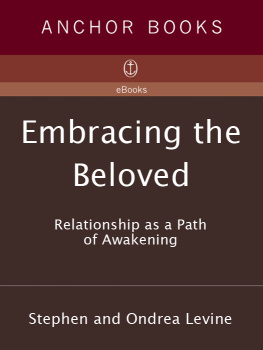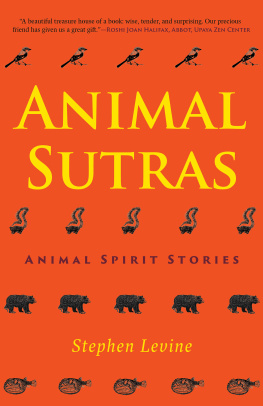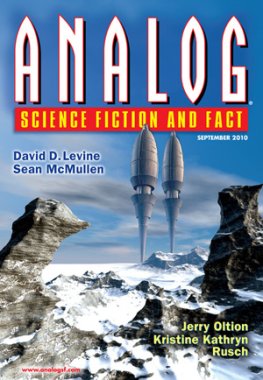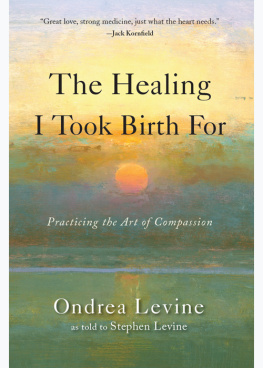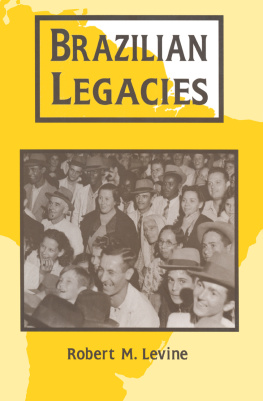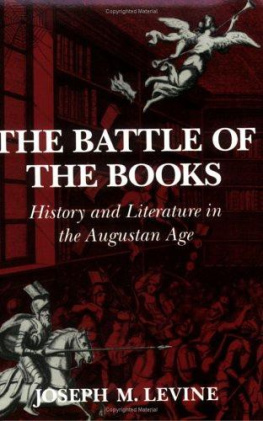Stephen Levine - New Zealand As It Might Have Been 2
Here you can read online Stephen Levine - New Zealand As It Might Have Been 2 full text of the book (entire story) in english for free. Download pdf and epub, get meaning, cover and reviews about this ebook. publisher: Victoria University Press, genre: Art. Description of the work, (preface) as well as reviews are available. Best literature library LitArk.com created for fans of good reading and offers a wide selection of genres:
Romance novel
Science fiction
Adventure
Detective
Science
History
Home and family
Prose
Art
Politics
Computer
Non-fiction
Religion
Business
Children
Humor
Choose a favorite category and find really read worthwhile books. Enjoy immersion in the world of imagination, feel the emotions of the characters or learn something new for yourself, make an fascinating discovery.
- Book:New Zealand As It Might Have Been 2
- Author:
- Publisher:Victoria University Press
- Genre:
- Rating:4 / 5
- Favourites:Add to favourites
- Your mark:
- 80
- 1
- 2
- 3
- 4
- 5
New Zealand As It Might Have Been 2: summary, description and annotation
We offer to read an annotation, description, summary or preface (depends on what the author of the book "New Zealand As It Might Have Been 2" wrote himself). If you haven't found the necessary information about the book — write in the comments, we will try to find it.
New Zealand As It Might Have Been 2 — read online for free the complete book (whole text) full work
Below is the text of the book, divided by pages. System saving the place of the last page read, allows you to conveniently read the book "New Zealand As It Might Have Been 2" online for free, without having to search again every time where you left off. Put a bookmark, and you can go to the page where you finished reading at any time.
Font size:
Interval:
Bookmark:

VICTORIA UNIVERSITY PRESS
Victoria University of Wellington
PO Box 600 Wellington
Copyright Stephen Levine and contributors 2010
First published 2010
This book is copyright. Apart from any fair dealing for the purpose of private study, research, criticism or review, as permitted under the Copyright Act, no part may be reproduced by any process without the permission of the publishers
National Library of New Zealand Cataloguing-in-Publication Data
New Zealand as it might have been 2 / edited by Stephen Levine.
ISBN 978-0-86473-615-4
1. Imaginary histories. 2. New ZealandHistory21st century. 3. New ZealandHistory20th century. 4. New Zealand History19th century. I. Levine, Stephen I. II. Title.
993.03dc 22
Printed by Printlink, Wellington
And Jacob dreamed, and beheld a ladder set up on the earth, and the top of it reached to Heaven (Genesis 28:1012)
To Jacob, my grandson:
May all your dreams and imaginings be for good, and fulfilled.
HMS New Zealand arriving at Auckland, 1913. Kinnear Collection, Alexander Turnbull Library, G-15253-1/2
Rufus Dewar (c. 19121913). Dean Parker Collection
Salute at the Cenotaph, Wellington. Men in naval uniform are from the RN Armando Diaz. A group of fascists are to the right with their arms upraised. Photograph by Edward Thomas Robson, 1934. Alexander Turnbull Library, PAColl-7081-16
Winston Churchill in Croydon, 1 January 1948. Hulton Archive, Getty Images, 102165893
President Lyndon Baines Johnson (19081973) and visiting New Zealand Prime Minister, Keith Jacka Holyoake (19041983), standing together at a White House ceremony welcoming Holyoake. Dominion Post Collection, Alexander Turnbull Library, EP-NZ Obits-Holyoake-12
Autographed photograph of Katherine Mansfield. Adelphi Studio (London), 1914. Alexander Turnbull Library, F-017274-1/4
Huts on Mesopotamia at Samuel Butler's homestead, ca 1868. Watercolour painting by William Packe. Alexander Turnbull Library, A-196-015
Cover of Bill Pearson's novel, Coal Flat, 1963. Original cover artwork by Colin McCahon. Pearson Estate
Hone Heke. Portrait by Joseph Jenner Merrett. Rex Nan Kivell Collection, NK321, National Library of Australia, 893600
Sir George Grey, Governor, New Zealand. Engraving from a photograph by William Wolfe Alais, ca 1861. Schmidt Collection, Alexander Turnbull Library, F-604-1/1
Maori warriors lead thousands of people down Lambton Quay en route to the grounds of Parliament, as part of the hikoi to protest the Seabed and Foreshore legislation, 5 May 2004. Photograph by Kenny Rodger. New Zealand Herald, 050504NZHKERHIKOI8
Remains of the wreck of the White Swan Steamer, June 1863. Artist unknown. Alexander Turnbull Library, A-090-011
Coat of arms, Australasia. John E. Martin Collection
How on earth did that happen? Cartoon by Peter Bromhead, 1977. Alexander Turnbull Library, A-328-036
Last meeting of the Legislative Council, Wellington. Archives New Zealand: National Publicity Studios Collection, Alexander Turnbull Library, F-19120-1/2
Electoral referendum ballot paper, 1992. Electoral Referendum Panel
Women voting for the first time at the Drill Hall in Rutland Street, Auckland, in 1893. Photograph by Beattie and Sanderson. Sir George Grey Special Collections, Auckland City Libraries, 7-A12353
Tenzing Norgay on the summit of Mount Everest at 11:30 a.m. on 29 May 1953. Tenzing waves his ice-axe on which are hung the flags of Britain, Nepal, the United Nations and India. Photograph by Edmund Hillary. Royal Geographical Society, S0001056
What makes the desert beautiful is that somewhere it hides a well
Antoine de Saint-Exupry, The Little Prince
W e all hope to find the unexpected, hidden beneath the landscape of the ordinary and the everyday. Beneath the surface of New Zealand's history and, in fact, part of it are possibilities: opportunities overlooked, neglected and now forgotten. There is a fascination about them, and rediscovering them intellectual oases, sources of refreshment offering the prospect of something else, something new, something perhaps a bit startling provides enjoyment and even aesthetic appreciation.
Counterfactuals a rearrangement of incidents and events, also known as alternative history are now a worldwide phenomenon. A Google search in June 2010 found 165,000 results for counterfactuals. Counterfactual history produced 82,000 hits; counterfactual analysis, 345,000; counterfactual thinking, 132,000; and counterfactual reasoning, 349,000. The results for alternative history were even greater: 145 million, with nearly 16 million for the words alternative history fiction.
The Amazon book site also points towards an increasingly crowded field. In June 2010 counterfactuals produced 799 book results; counterfactual history, 38; and counterfactual thinking, 86. Searching on alternate history gave 671 results, with alternative history fiction producing 178. There is, furthermore, on both Google and Amazon, evidence of an alternative history community, with thousands of people promoting large numbers of lists, guides and other products, while maintaining discussion groups of one kind or another.
This second book of New Zealand counterfactuals (New Zealand as it might have been, with 15 scenarios, was published in 2006) takes on an array of topics, each, in a sense, an enigma, a puzzle waiting to be solved. In one way or another there are two historical puzzles at issue: why did an event that could well have happened fail to do so? And what would the consequences have been what would it have meant had it in fact taken place?
At any moment every event in the life of a nation, or a person, has a range of possible paths that can be taken. Counterfactual speculation, responding to that reality, considers what actually happened by looking at what could have happened, the inquiry akin to the movements of a kaleidoscope, each turn opening up new patterns, new relationships, among its interconnected pieces.
This book of counterfactual chapters does not provide a continuous narrative, a single thread of altered New Zealand history in which each restructured event leads inexorably on to the next. Quite the contrary: each chapter stands on its own. Indeed, some events, such as the opening chapter's vision of a New Zealand transformed by German occupation as a result of an altered outcome of the First World War, would preclude some of the other circumstances conceived of in this book including, for instance, Gallipoli (in chapter 2) and the Second World War (chapters 3 and 4) from ever taking place.
So this is a book to be read as a series of surprises, each encounter with a new New Zealand altogether separate from the one preceding and the next one just up ahead. And this is also a book about possibilities: some realised, some not. In that respect, through a mingling of the real and the imagined of what was and what might have been it resembles life as it is, full of plans, some fulfilled, some not: as in the Jewish proverb, People plan, God laughs (mentsch tract, Gott lacht).
Just as the bright colours of a painting can fade with the passage of time made dull by dust, and grit, and too many layers of varnish so too events can lose their glow, becoming lost to memory. Any work of history, counterfactual or otherwise, strives to rescue from neglect forgotten incidents, personalities obscured by indifference and inattention. In this sense historical writing can be likened to art restoration, bringing life and lustre back to a canvas filled with possibility and promise.
Font size:
Interval:
Bookmark:
Similar books «New Zealand As It Might Have Been 2»
Look at similar books to New Zealand As It Might Have Been 2. We have selected literature similar in name and meaning in the hope of providing readers with more options to find new, interesting, not yet read works.
Discussion, reviews of the book New Zealand As It Might Have Been 2 and just readers' own opinions. Leave your comments, write what you think about the work, its meaning or the main characters. Specify what exactly you liked and what you didn't like, and why you think so.


